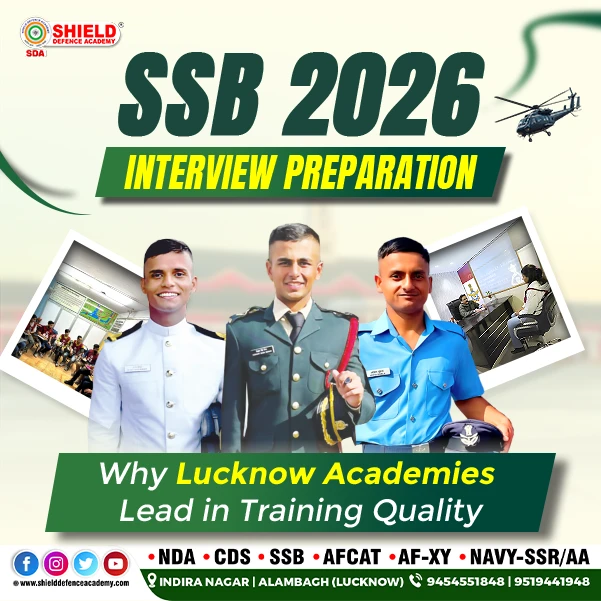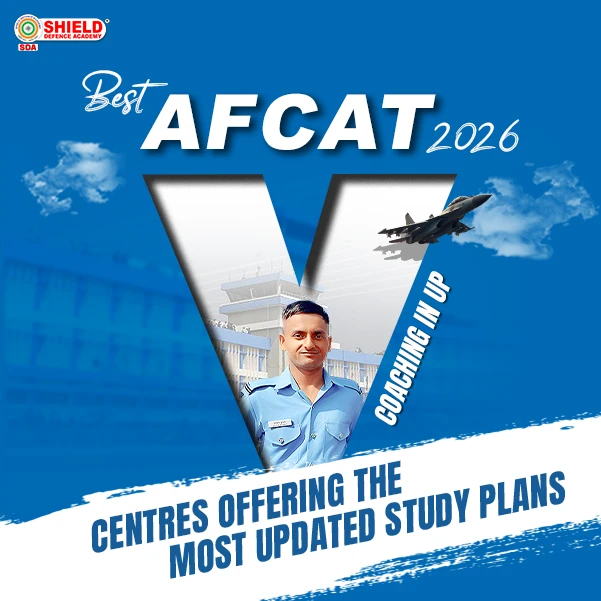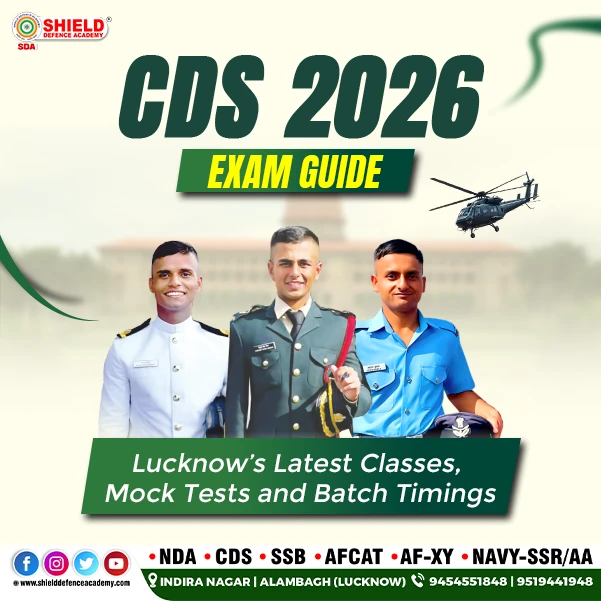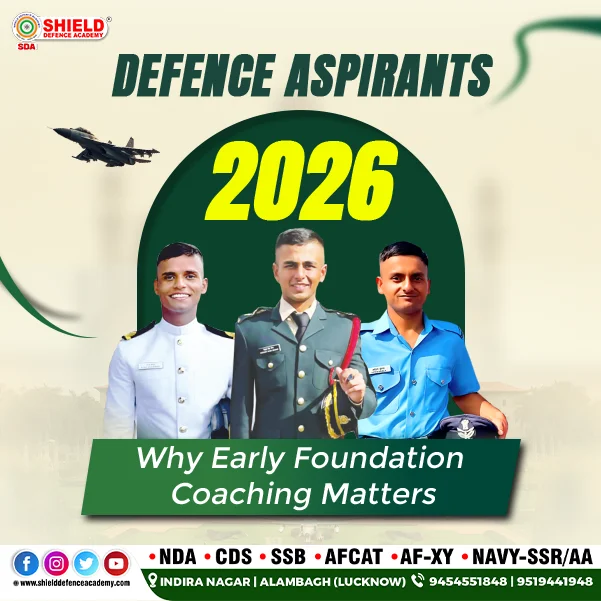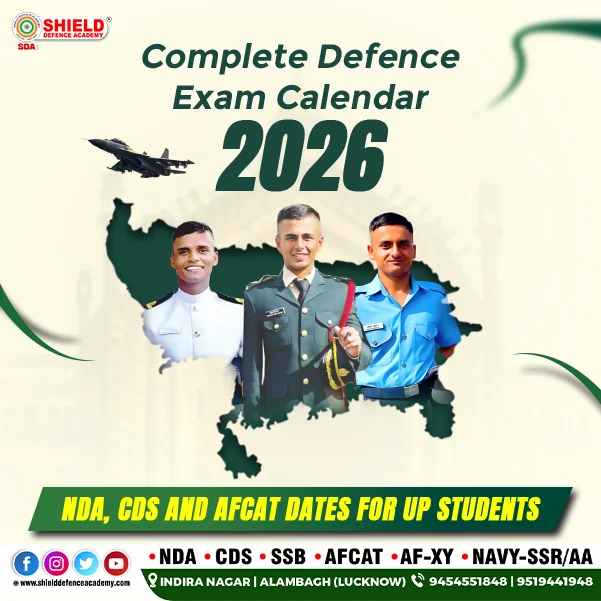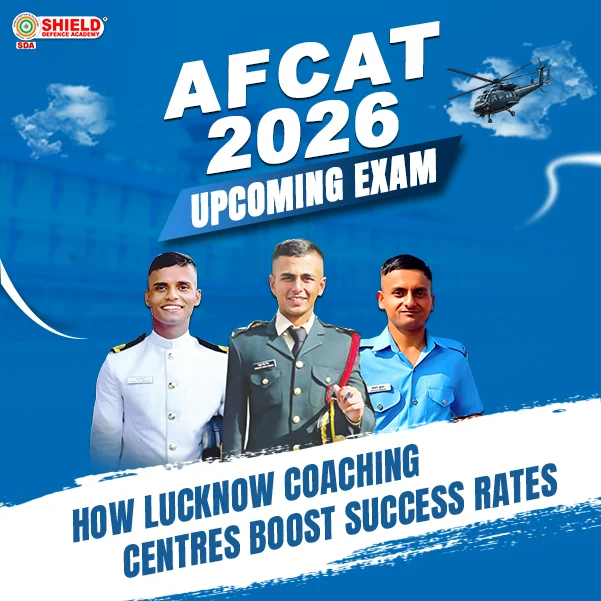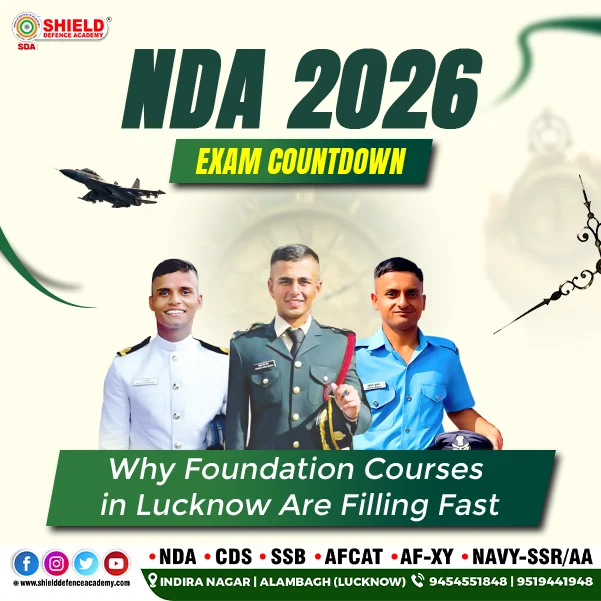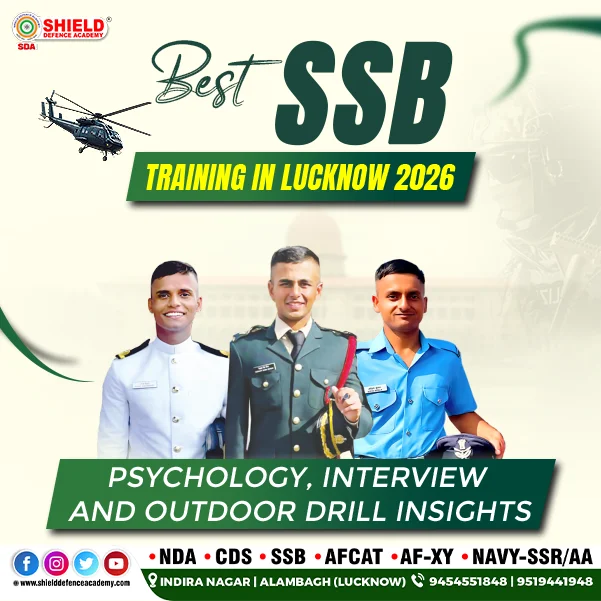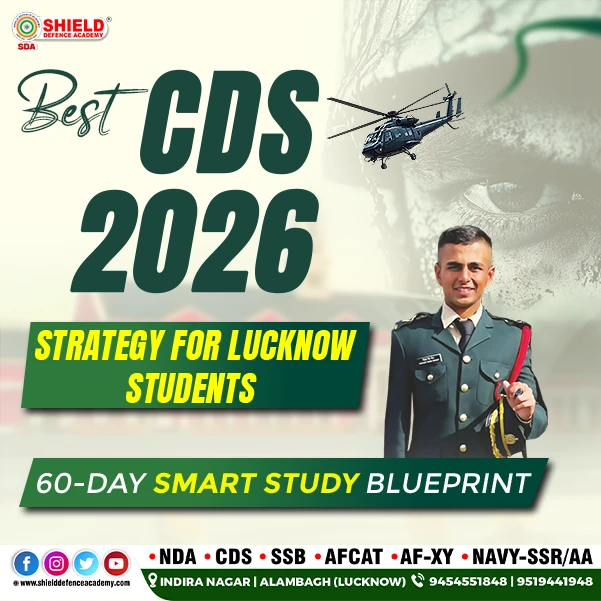The Situation Reaction Test (SRT) is a crucial part of the Service Selection Board (SSB) Interview process for candidates appearing for any Defence exam such as NDA, CDS, AFCAT, etc. This test aims to evaluate a candidate’s psychological and emotional responses to various real-life situations and scenarios. The SRT is designed to assess the candidate’s problem-solving abilities, time management, leadership potential, and overall suitability for a career in the military.

Look no further than Shield Defence Academy, where we offer expert training for the Situation Reaction Test (SRT) by Retired Armed Force Officers from the SSB Interview Board. Our academy is committed to providing top-notch, comprehensive coaching that will set you on the path to success in your defense career.
In this blog, we will explore the intricacies of the SRT and discuss some effective strategies for tackling this aspect of the SSB interview.
Understanding the Situation Reaction Test (SRT):
The SRT consists of a series of 60 hypothetical situations or scenarios that a candidate may encounter during their military service. These situations are designed to test the candidate’s emotional intelligence, decision-making skills, and ability to handle pressure. Each scenario is accompanied by a blank page where the candidate is required to write their response—how they would react or what actions they would take in the given situation.
In the SRT, candidates are presented with a wide range of scenarios that cover topics such as leadership, teamwork, crisis management, ethical dilemmas, and decision-making under stress. The scenarios are carefully crafted to reflect the challenges and responsibilities faced by military personnel in real-world situations. It is important to note that there are no right or wrong answers in the SRT. Instead, the assessors are looking for honest, rational, and thought-out responses that showcase the candidate’s personality traits, problem-solving abilities, and decision-making processes.
At Shield Defence Academy, we understand the high stakes involved in the SSB interview. That’s why our SRT preparation materials are meticulously curated to help you build confidence, improve your response time, and enhance your critical thinking abilities. The SRT is a crucial part of the interview process, and our materials are tailored to ensure that you are well-prepared to excel in this aspect.
Strategies for Tackling the SRT
1. Stay Calm and Focused:
The SRT is designed to test a candidate’s ability to think rationally and make sound decisions under pressure. Therefore, it is important to stay calm and focused while responding to each scenario. Take a moment to read and understand the situation before formulating your response. Avoid rushing through the scenarios, and instead, carefully consider the implications of your actions.
2. Be Yourself:
One of the key aspects of the SRT is to gauge the candidate’s true personality and values. Therefore, it is important to be genuine and authentic in your responses. Avoid trying to portray an idealized version of yourself or providing responses that you think the assessors want to hear. Instead, stay true to your instincts and beliefs while crafting your responses.
3. Prioritize Actions:
In many scenarios, candidates may have to juggle multiple tasks or make quick decisions. It is important to prioritize your actions based on the urgency and potential impact of each task. Consider the consequences of your decisions and prioritize tasks that address immediate threats or critical situations.
4. Practice Time Management:
The SRT is a time-bound test, with each scenario typically allocated one minute for response. Practicing time management is crucial to ensure that you can read, comprehend, and respond to each scenario within the given time frame. Prioritize the most critical aspects of the scenario and allocate your time accordingly to maximize the effectiveness of your responses.
5. Reflect on Military Values:
The scenarios presented in the SRT often revolve around military ethics, values, and responsibilities. As a candidate, it is important to reflect on the core values of the armed forces, such as integrity, leadership, teamwork, and dedication to duty, while formulating your responses. Showcase how your responses align with these values to demonstrate your understanding of the military ethos.
At Shield Defence Academy, Retired Armed Force Officers from the SSB interview board, bringing with them years of experience and expertise in the field. They have firsthand knowledge of the selection process and are dedicated to equipping aspirants with the skills and knowledge you need to excel in the SRT from the very foundation.
Don’t leave your SRT preparation to chance. Trust the expertise of Shield Defence Academy to help you ace the SSB interview and pave the way for a successful career in the armed forces. Join us and benefit from the invaluable insights and guidance of ex-armed forces officers who understand what it takes to succeed in the SSB interview.
“Insights from Ex-Armed Forces Officers: 12 Top Most Sample Scenarios and Responses for SRT Preparation”
Let’s delve into a few sample scenarios to illustrate how a candidate might approach the SRT.
1. Situation: You are leading a team on a reconnaissance mission in a hostile territory. While crossing a river, one of your team members falls and injures himself. You are pressed for time, and the safety of the team is at stake.
Response: In this scenario, my immediate action would be to ensure the safety of the injured team member while maintaining the security of the entire team. I would instruct the team to provide immediate medical aid to the injured member and secure the area to prevent any potential threats. Simultaneously, I would assess the situation and make a quick decision on whether to continue the mission or seek assistance, considering the time constraints and the safety of the team.
2. Situation: You uncover an act of misconduct by a fellow soldier within your unit. The individual is a close friend and has been struggling with personal issues. Reporting the misconduct could lead to severe consequences for them.
Response: As a soldier, upholding the integrity and discipline of the unit is paramount. While I empathize with my friend’s personal struggles, it is essential to maintain the standards of conduct within the military. I would approach the situation with empathy and discretion, guiding my friend to seek the necessary support for their personal issues while also reporting the misconduct through the appropriate channels, ensuring that the integrity of the unit is preserved.
3. Situation: During a routine patrol, you encounter a group of civilians in distress due to a natural disaster. Your unit’s primary mission is to maintain security in the area.
Response: In this critical scenario, the welfare of the civilians is a priority alongside the unit’s security responsibilities. I would swiftly assess the situation, delegate tasks to ensure the safety and well-being of the civilians, and coordinate with the relevant authorities to provide immediate assistance. Simultaneously, I would maintain communication with my unit to ensure that the security objectives are met without compromising the humanitarian response.
4. Situation: You are serving as a platoon commander during a peacekeeping mission in a foreign country. A local civilian approaches you seeking assistance after their home was destroyed by a natural disaster. React to the situation.
Response: I would listen to the civilian and assure them that I will do everything in my power to help. I would then coordinate with the appropriate organizations and authorities to provide aid and support to the affected individual and their community. I would also ensure that my platoon contributes to the relief efforts according to the mission’s guidelines.
5. Situation: You are appointed as the head of a military training academy. One of the senior officers is found guilty of misconduct and it is your responsibility to take disciplinary action. React to the situation.
Response: I would review the evidence and ensure that the senior officer is given a fair chance to explain their actions. I would then follow the established protocols and regulations to take appropriate disciplinary action, ensuring that justice is served while maintaining the integrity of the institution and upholding its values.
6. Situation: As a naval officer, you are on a peacekeeping mission in international waters when you receive distress signals from a nearby civilian vessel. React to the situation.
Response: I would immediately order my crew to change course towards the distressed vessel and prepare for a rescue operation. I would coordinate with the relevant authorities and deploy necessary resources to provide assistance to the civilians. Ensuring the safety and security of the distressed individuals would be my top priority.
7. Situation: You are leading a combat unit during a military exercise when a communication breakdown occurs due to technical issues. React to the situation.
Response: I would quickly assess the extent of the communication breakdown and implement alternative communication methods, such as using backup systems or relaying messages through runners. I would ensure that the unit remains coordinated and focused on their objectives despite the challenges, and work towards resolving the technical issues as efficiently as possible.
8. Situation: You are a military intelligence officer tasked with analyzing and presenting a complex set of data to senior officials. React to the situation.
Response: I would meticulously analyze the data, ensuring accuracy and relevance, and then present it in a clear, concise, and compelling manner to the senior officials. I would highlight the key insights and implications, allowing the officials to make informed decisions based on the intelligence provided.
9. Situation: As an Air Force pilot, you are on a reconnaissance mission when your aircraft experiences mechanical failure. React to the situation.
Response: I would calmly assess the nature of the mechanical failure and immediately initiate emergency procedures to stabilize the aircraft and ensure the safety of myself and my crew. I would then communicate with ground control, providing them with all relevant information to facilitate a safe return or recovery operation.
10. Situation: You are leading a team of engineers responsible for repairing critical infrastructure in a conflict-affected region. Due to heightened tensions, local workers are hesitant to cooperate. React to the situation.
Response: I would engage in open dialogue with the local workers, demonstrating respect and understanding for their concerns. I would strive to build trust by emphasizing the shared goal of restoring vital infrastructure for the benefit of the community. I would also involve local leaders and authorities to address any security concerns and seek their support in fostering cooperation.
11. Situation: You are in charge of a medical team deployed in a remote area where a sudden outbreak of a contagious disease has occurred. React to the situation.
Response: I would immediately implement strict infection control measures to contain the spread of the disease while providing care and treatment to those affected. I would liaise with relevant health authorities and international organizations to mobilize additional resources and expertise in combating the outbreak and minimizing its impact on the local population.
12. Situation: As a logistics officer, you are responsible for coordinating the delivery of essential supplies to a humanitarian aid mission in a disaster-stricken area. Due to logistical challenges, the supplies are delayed. React to the situation.
Response: I would rapidly assess the causes of the delay and work on alternative plans to ensure the timely delivery of essential supplies. I would communicate transparently with the aid organizations and local authorities, keeping them informed of the situation and seeking their input on mitigating the impact of the delay. Additionally, I would focus on optimizing the logistics chain to prevent similar challenges in the future.
What sets Shield Defence Academy apart is our commitment to providing realistic and challenging SRT scenarios that mirror the ones you’ll encounter during the actual SSB interview. Our team of Experienced Retired Officers, who are giving wings to the dream of aspirants from years, have first-hand knowledge of what it takes to succeed in these interviews and have crafted SRT situations that will thoroughly test and improve your decision-making skills under pressure.
By enrolling in Shield Defence Academy’s SRT preparation program you will be able to attempt these situations in seconds, you’ll gain access to a wealth of SRT scenarios, expert tips, and strategies that will give you a competitive edge. Our comprehensive approach to SRT preparation covers a wide range of situations, ensuring that you are equipped to handle any challenge that comes your way during the SSB interview.
Conclusion:
Enroll now at Shield Defence Academy and take the first step towards realizing your dream of serving in the armed forces. Our SRT preparation materials will give you the confidence and skills you need to conquer the SSB interview and embark on an exciting and rewarding career defending our nation.
The Situation Reaction Test is a pivotal component of the SSB interview process, providing valuable insights into a candidate’s decision-making abilities, emotional intelligence, and alignment with military values. By approaching the SRT with a clear understanding of its objectives and leveraging effective strategies, candidates can showcase their leadership potential and suitability for a career in the armed forces. Remember that authenticity, rational thinking, and a strong alignment with military ethos are key to excelling in the SRT. With careful preparation and a focused mind-set, candidates can navigate the SRT with confidence and demonstrate their readiness to serve in the Indian Armed Forces.
Also read: Conquering the SSB Screening Test: Tips for Success

